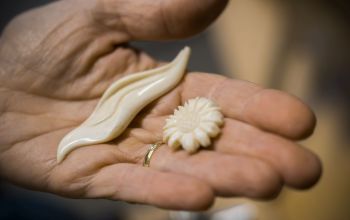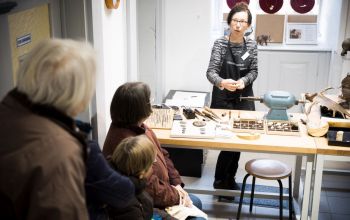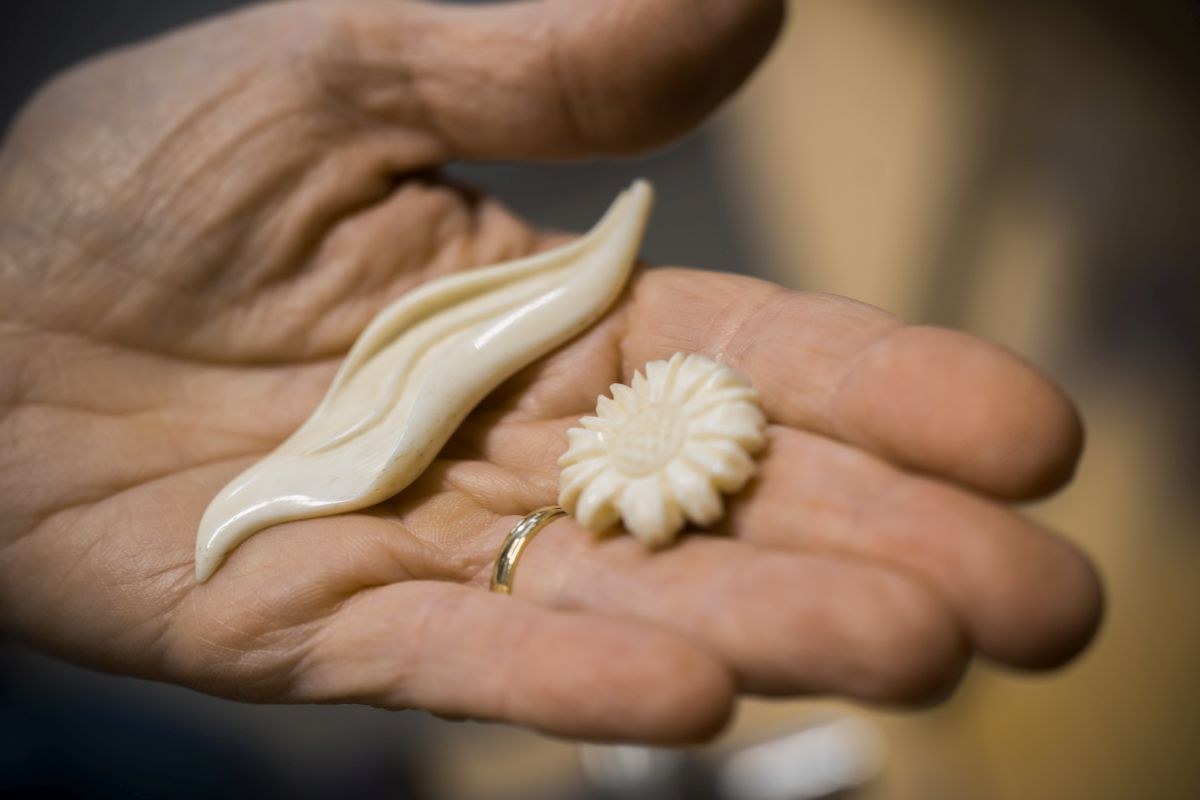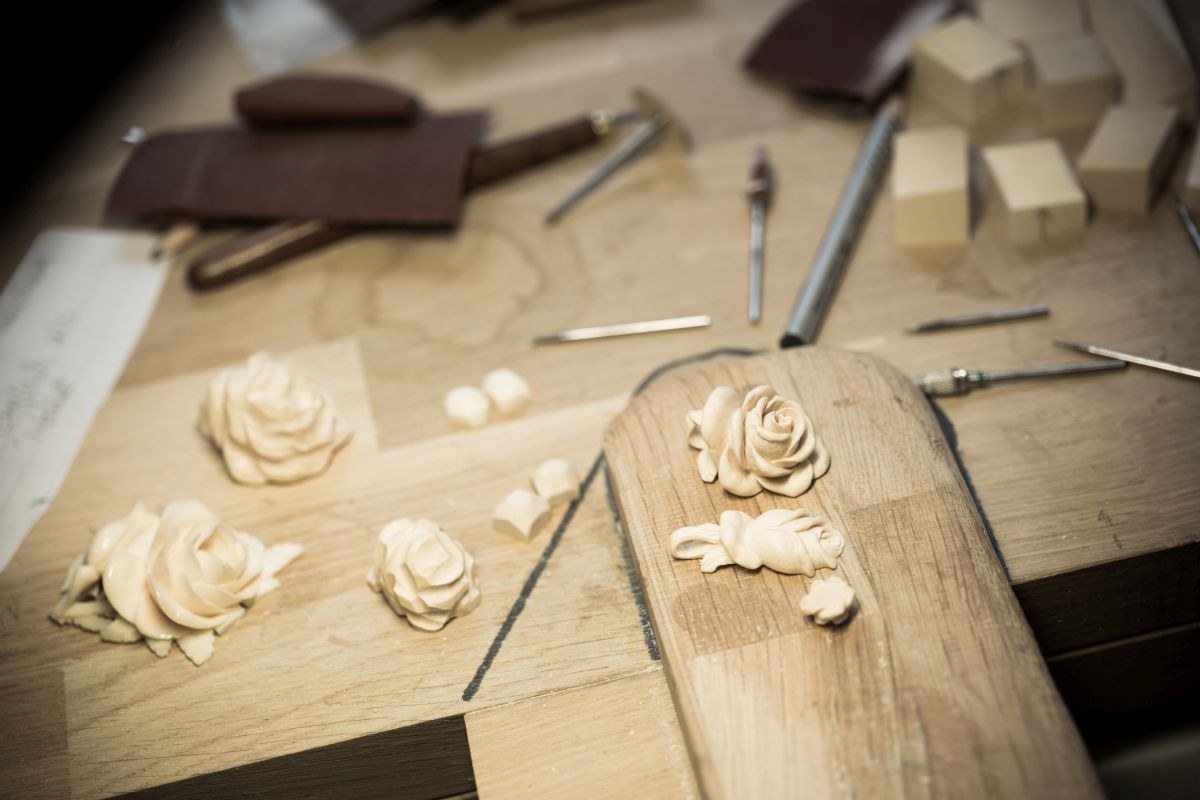A longing for antiquity, hunting history and ivory carving - Erbach Palace (Part 3)
Heidi Lück needs, above all, patience. The master ivory carver sits at a modest workbench, bent over a small piece of ivory that she’s holding in one hand. A buzzing fills the room, and a sweet scent. The buzzing comes from the drill in her other hand; Lück is carving something that might be on display in the museum. This is where visitors are able to ask their questions.
Lück is making a rose, the trademark of Erbach ivory carving. She painstakingly peels out one rose petal after another, scraping, filing, drilling. Then she blows the dust away. The smallest rose is barely as big as a fingernail. "As an ivory carver, you are only satisfied when you can't see any more scratches on the surface," she says, and polishes the piece.
The material Lück works with is today a rarity. Until the ivory trade was banned in 1985, they still worked with African ivory here in Erbach. There are still lots of leftovers from which roses and other figures can be carved. New ivory, on the other hand, now comes from mammoths found in Siberia. "There’s an almost inexhaustible supply," Lück says.
Visitors come by to watch Lück at work time and time again. She shows them the difference between elephant ivory, which is lighter, and that of a mammoth. "This is darker, because it has lain in the earth for thousands of years," she says. She lets the pieces be handed around the onlookers and begins to talk about what fascinates her about ivory. She has a thin piece in her hand that she bends, saying: "It's very flexible, very elastic." In the days before plastic, there was nothing else that compared: ivory was so popular because it is harder than wood and therefore very durable, but easier to work with than glass because it is not as hard. It takes Lück around five hours to carve a small design such as a rose or a frog.
Lück's job is a rarity. Almost all Germany’s ivory carvers are trained in Erbach. "In the past 30 years, almost every ivory carver has studied here," she says. Here, in the time capsule.
Previous article in the series:A longing for antiquity, hunting history and ivory carving - Erbach Palace (Part 2)
Gallery
Published on 01.02.2019
Share on Twitter?
By clicking on this link you leave the Kultur in Hessen website and will be redirected to the website of Twitter. Please note that personal data will be transmitted in the process.
Further information can be found in our privacy policy.
Share on Facebook?
By clicking on this link you leave the Kultur in Hessen website and will be redirected to the website of Facebook. Please note that personal data will be transmitted in the process.
Further information can be found in our privacy policy.

















